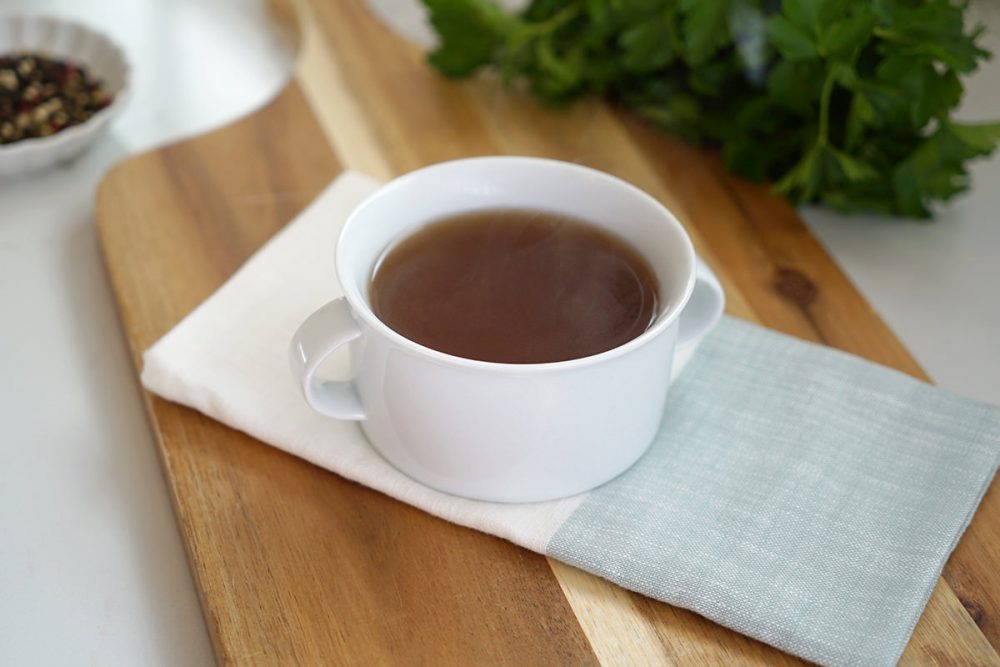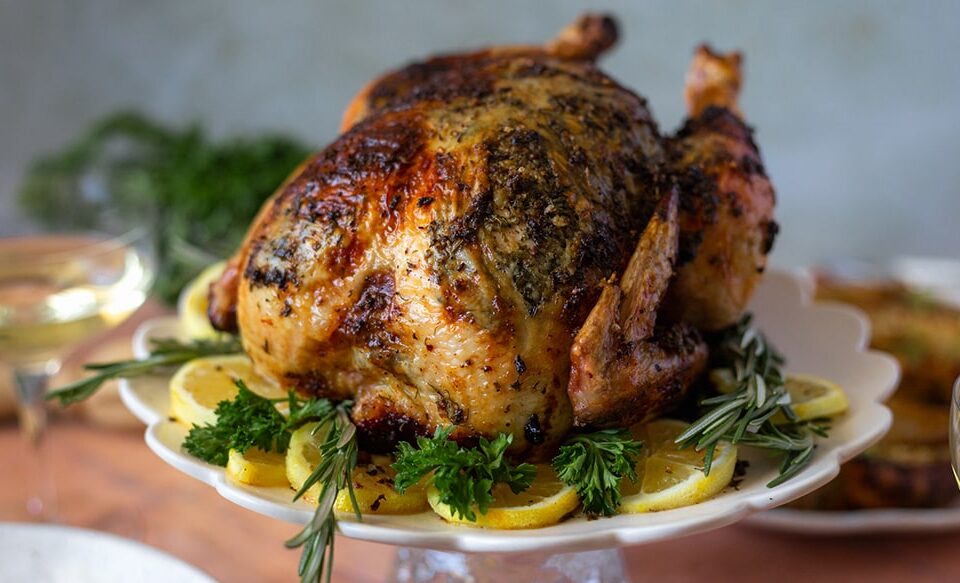Meet Us at Food Loves Tech!
October 8, 2017
5 Savory Slow Cooker Recipes for Fall
October 22, 2017Bone broth is currently one of the most popular trends in the health community, but did you know this soothing stock has been around for centuries? There are a lot of really good reasons why this ancient remedy is making a major splash in today’s modern world – and they go far beyond the comfort of a hot mug of fragrant broth on a chilly fall day. Although that does sound pretty amazing right about now.
Bone Broth vs. Stock: What’s the Difference?
There seems to be a lot of confusion around this, but really, bone broth is essentially just good stock. According to Bon Appetit, traditional soup stock is thick due to the collagen that seeps out of joints and bones during long-term cooking, while broth is thinner and made with actual meat. Over time, people just started referring to traditional soup stock as bone broth, despite the difference in preparation.
Bone broth is defined by its thickness and has a gelatin-like consistency when chilled, kind of like Jello, but without all the artificial sweeteners, colors, and flavors. This gel-like consistency comes from the collagen found in the bones. Collagen is a protein derived from the meat cartilage and is what gives bone broth many of its numerous health benefits.
The Many Benefits of Bone Broth
Besides the aforementioned “comfort factor,” bone broth has many healing qualities that make it a veritable superpower:
The Gut Healer: The collagen found in bone broth protects and heals the digestive tract, potentially even helping to heal “leaky gut.” Bone broth supports better digestion and proper nutrient absorption within the body.
The Joint Protector: Ditch the expensive glucosamine supplements and ease your joint pain with homemade bone broth instead since bone broth is naturally full of glucosamine.
The Immune System Supporter: Bone broth has a high concentration of the minerals responsible for supporting and strengthening your immune system. Ever wonder why your grandmother’s homemade chicken soup always made you feel better? Turns out, there was some science mixed in with all that grandmotherly love.
The Bone Strengthener: The phosphorus, magnesium, and calcium found in bone broth provide the essential building blocks for your own healthy bones.
The Beautifier: Bone broth is a rich source of collagen, which is great for hair, skin, and nails. Drinking bone broth can help keep you looking youthful and radiant.
Learn more about the nutritional benefits of bone broth.
Homemade Bone Broth Recipe:

The best way to get your hands on some bone broth is, of course, to make it yourself! We’ve included one of our favorite recipes below. It’s pretty easy, but it does take some time so if you’re in a pinch, you can always order some pre-made bison bone broth from us instead. Either way, you’ll reap the benefits of this tasty brew.
Choosing your meat and bones
Since animals need to be at their best in order to pass on the maximum health benefits to you, you should always start with the highest-quality meats and bones; pasture-raised and grassfed are always best. What kind of bones you choose are entirely up to you and the type of broth you want to make. Ask your local butcher for soup bones like knuckles, neck, and feet. These bones will have enough meat and cartilage to give you that thick consistency your broth needs. Some excellent choices are:
Next, select the vegetables and herbs you want to include in your batch of bone broth. Like the type of bones, this is completely up to your personal preference, but some good options include:
- Carrots
- Celery
- Onion
- Green Onion
- Leeks
- Salt
- Pepper
- Parsley
- Bay Leaves
- Rosemary
- Thyme
- Sage
- Garlic
- Ginger
- Red Pepper Flakes
TIP:
Avoid vegetables like broccoli, turnip peels, cabbage, brussels sprouts, green peppers, collard greens, and mustard seeds as these will make your broth bitter.
Optional: Once you have gathered all of your ingredients, you can roast your bones and vegetables in the oven on a baking sheet for 20-30 minutes at 450 degrees. This will give your bone broth a richer flavor and a darker color.
Place the bones and all of your vegetables in a large stockpot and add 2-4 inches of water. Bring to a boil then reduce heat to a low setting and simmer on low heat for 12-24 hours. The longer the time, the richer the flavor!
Optional: Skim the fat off the surface of your bone broth, but if you prefer to leave the fat you can. Remember, this is your culinary creation!
Once your broth has finished cooking, strain the liquid through a sieve to remove any remaining solids from the broth. Let the bone broth cool then batch it up into storage containers. Enjoy it in a mug like any other hot beverage or use it as a base for other recipes. Bone broth can be refrigerated for 3-4 days and frozen up to one year. Happy sipping!



